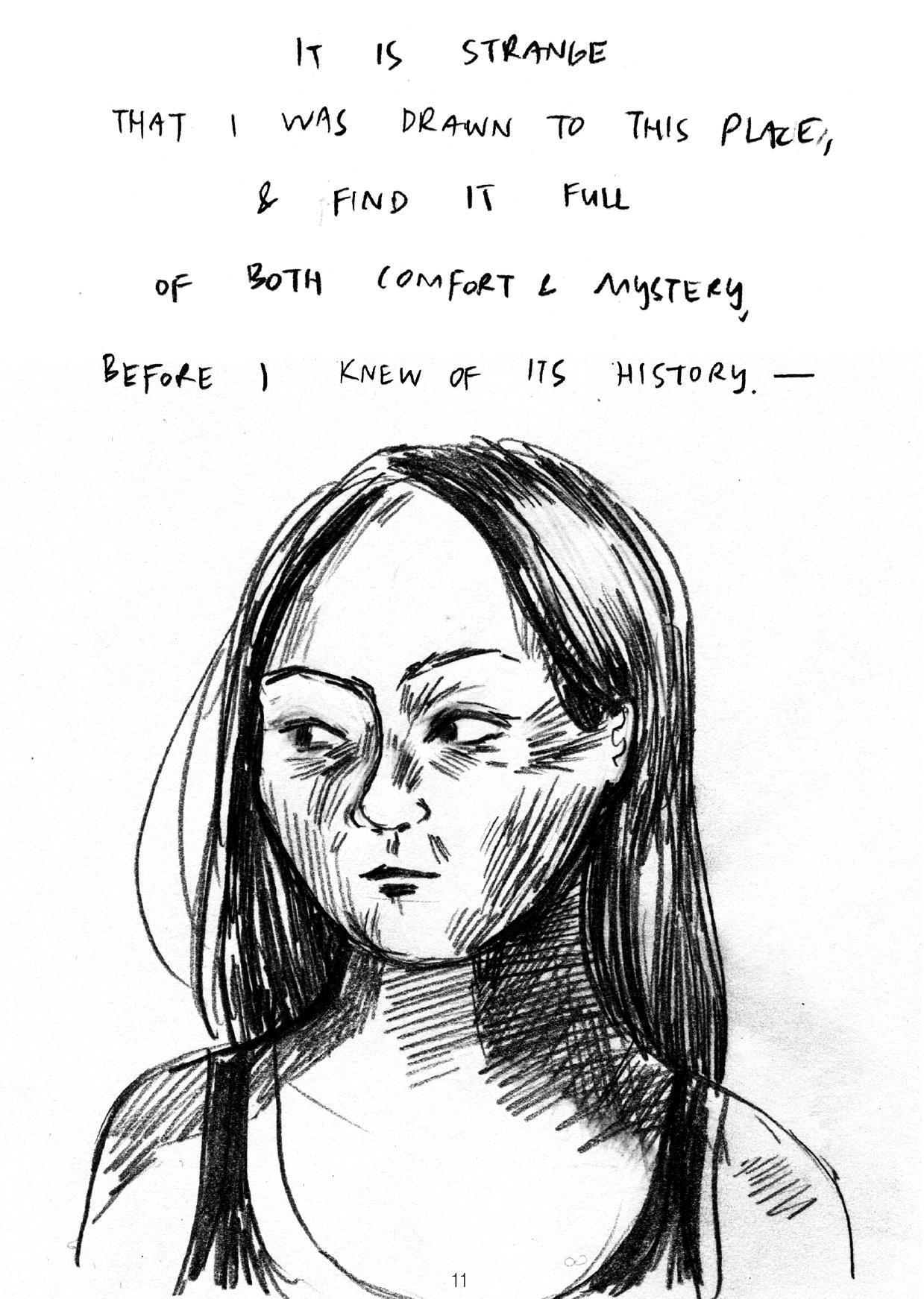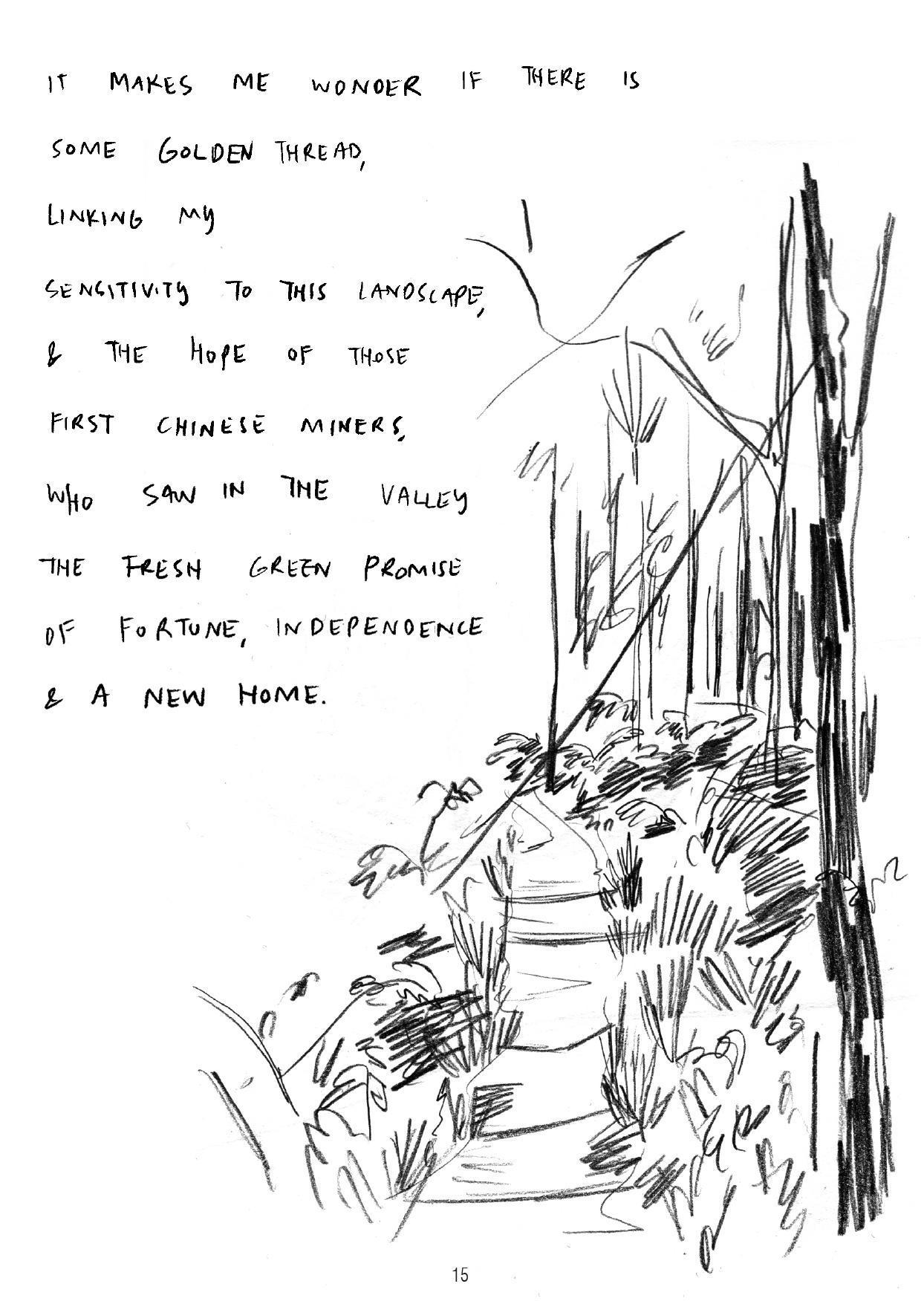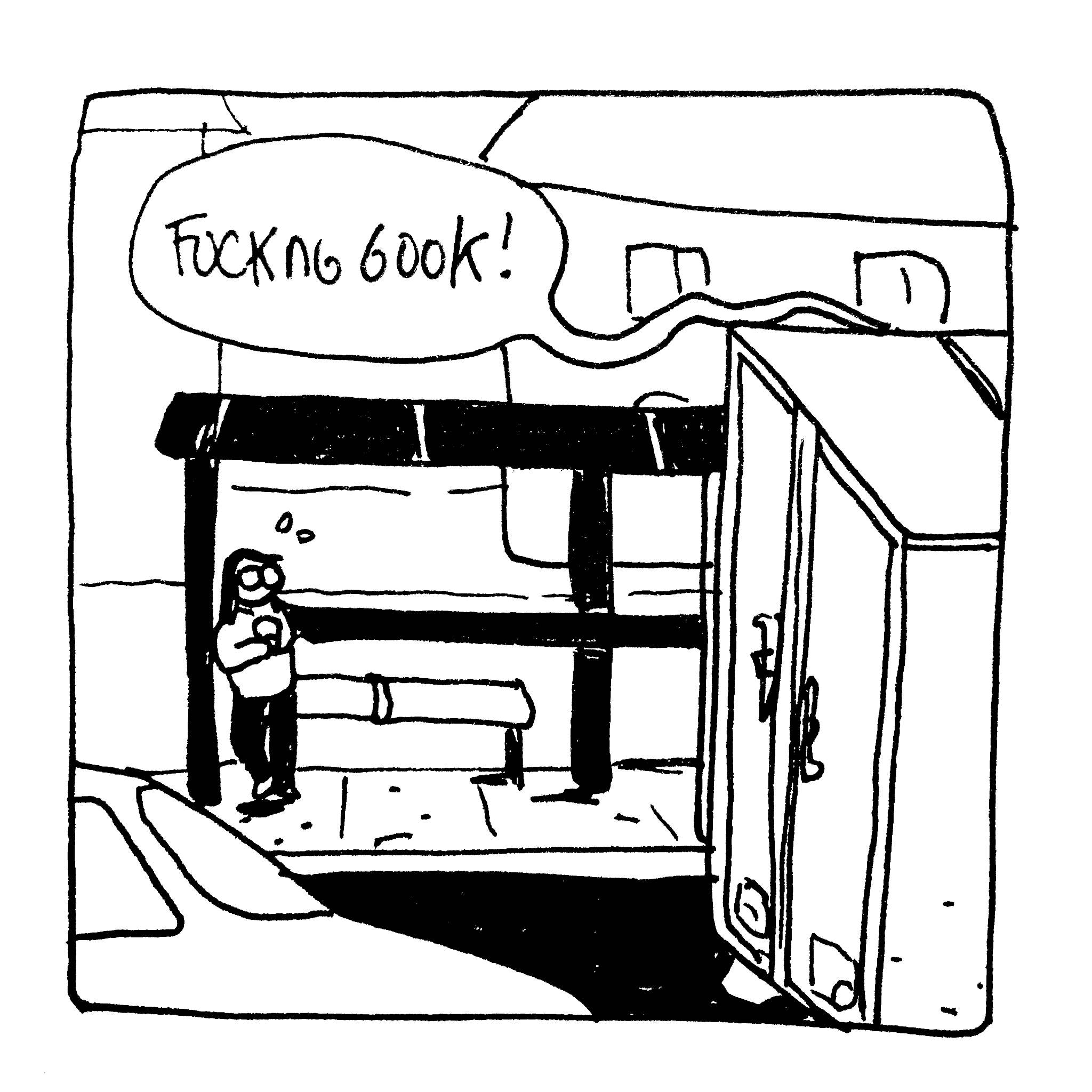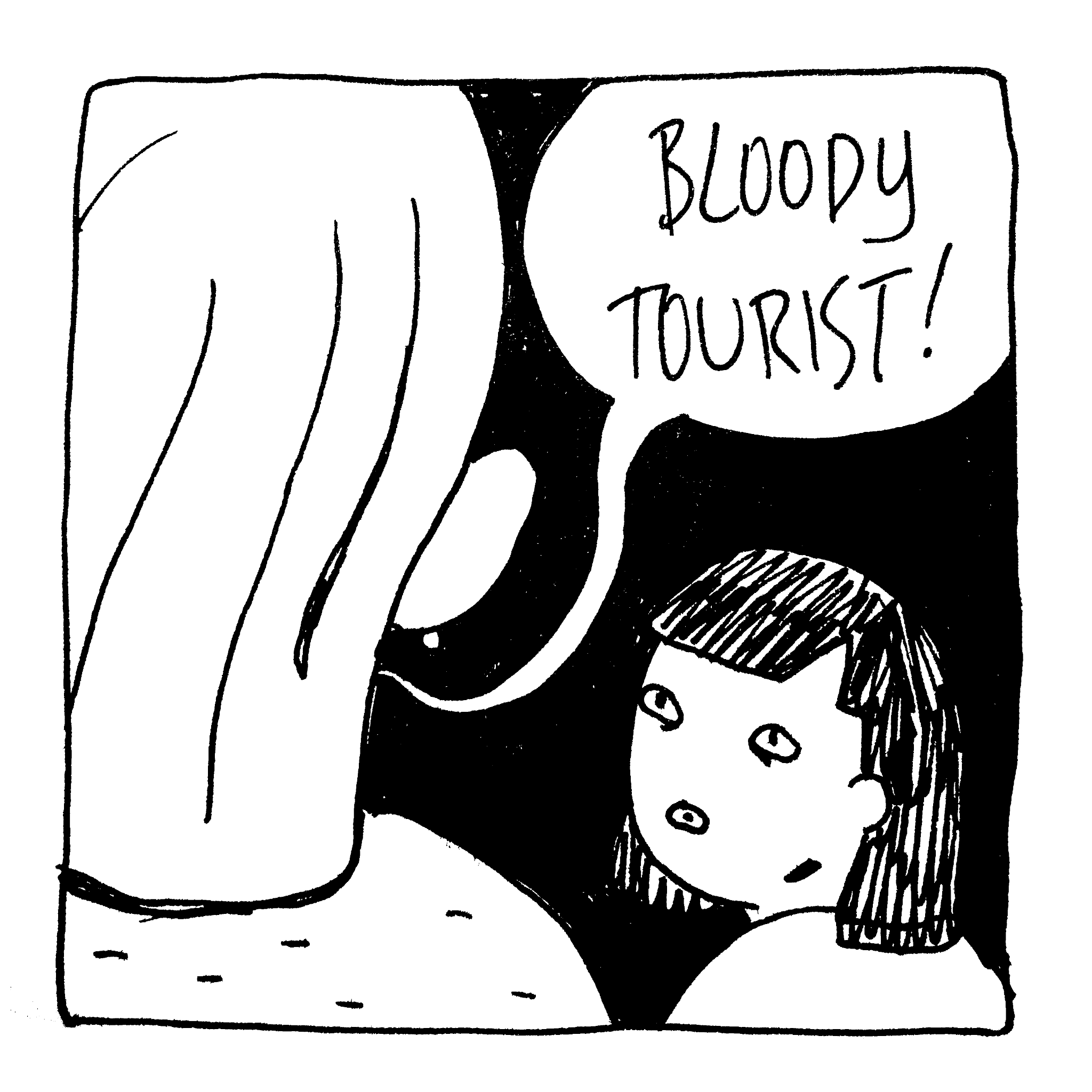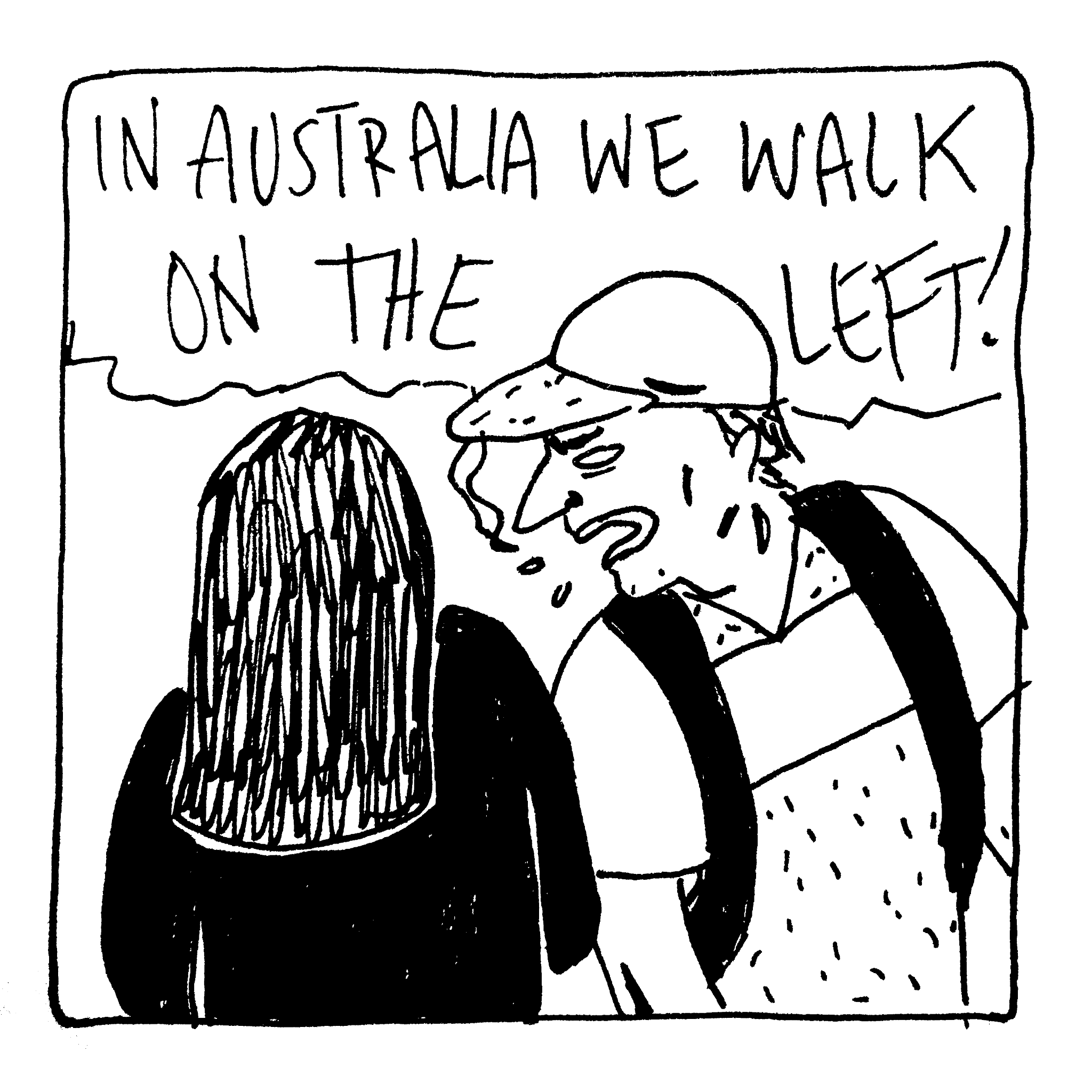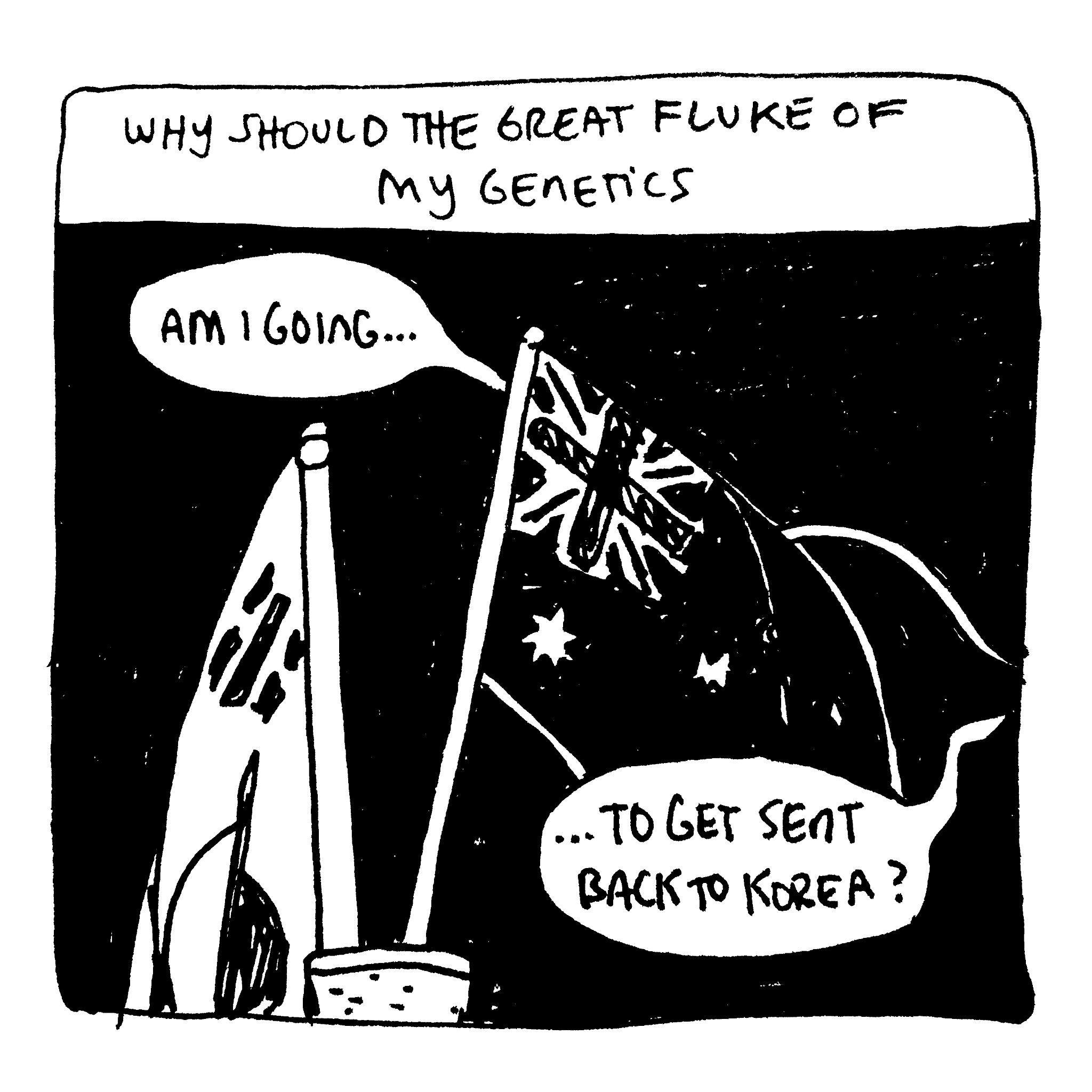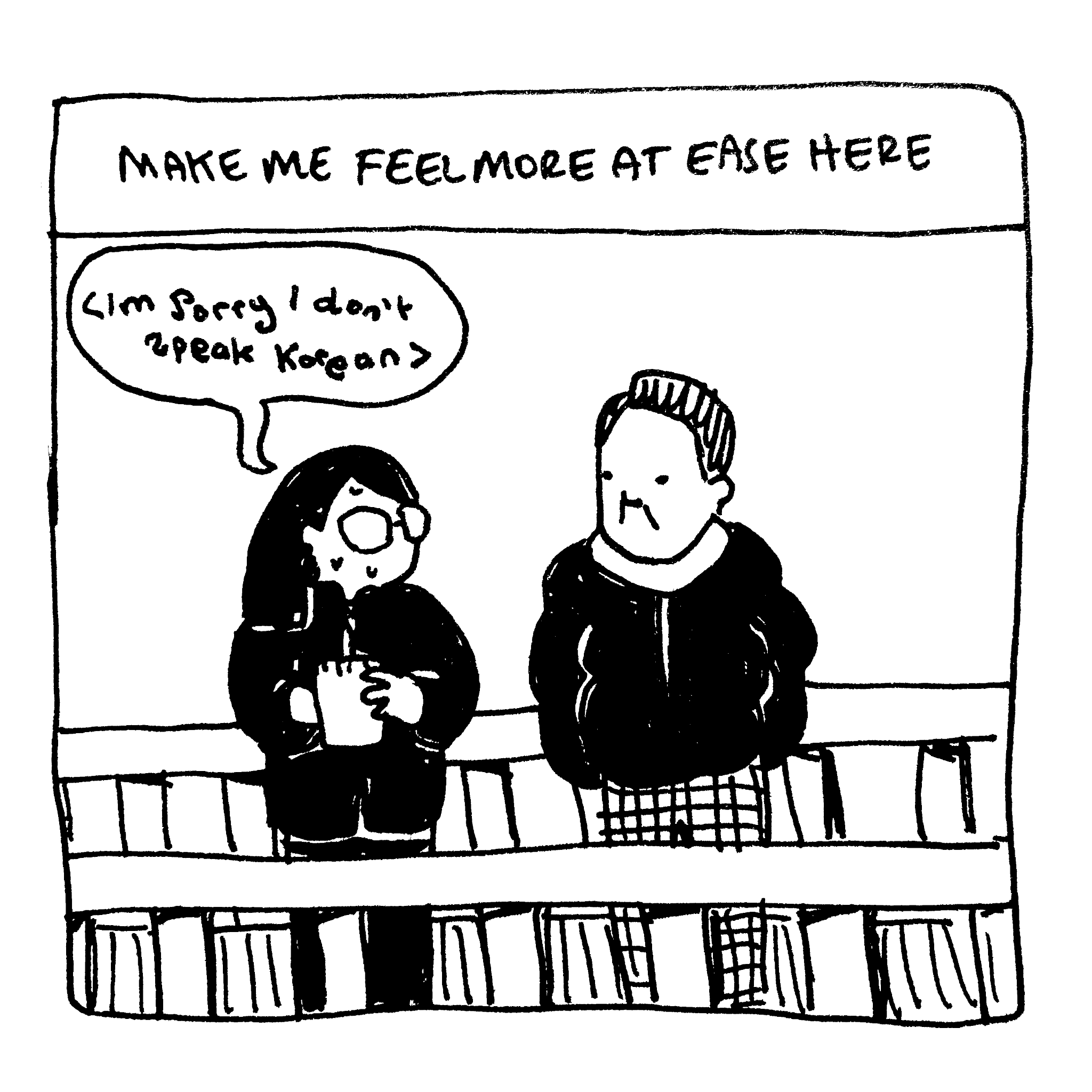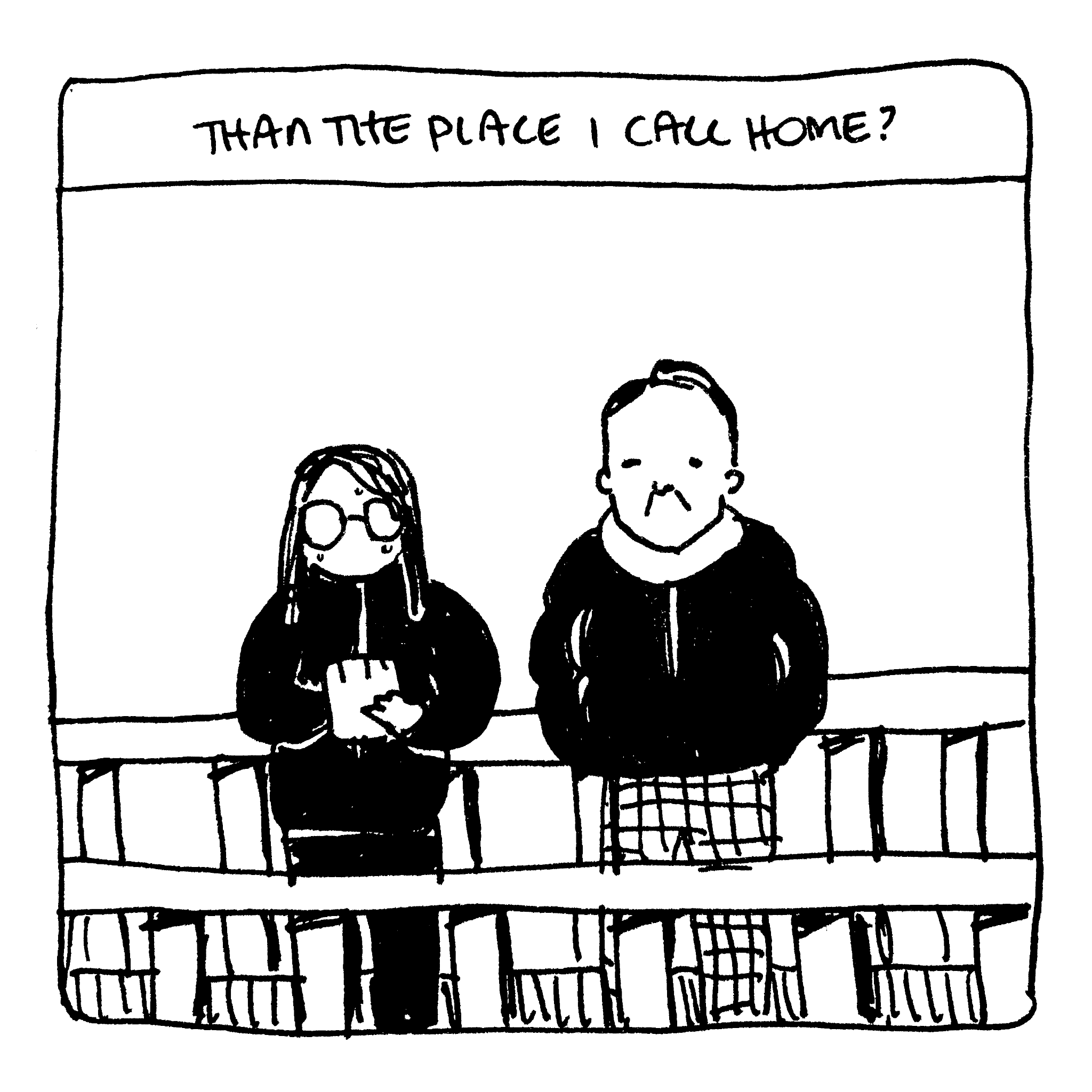Why Comics? / Australian Comics and the Autographic Turn by Safdar Ahmed
Australian Comics and the Autographic Turn
The premise of this essay is that Australian comics are changing radically, both in relation to who makes them and the issues they address. Not before time, we have provocative, engaging, autographic works by diverse practitioners which reflect critically on issues of race, gender, identity, history and belonging. And what makes these comics important is an intent not so much to resist the discursive tropes of Australian national identity (and the subjects they produce) but to work outside, or go beyond them.
In the long view, a great deal of Australian comic art can be understood alongside discourses of national identity, which includes fantasies of colonial settlement and racial homogeneity. As John Foster points out of locally produced war stories in the 1940s: ‘Almost without exception, all Japanese are portrayed as being ugly and cruel’1. Annette Schiell observes that Australian Aboriginal people in adventure comics of the same period are: ‘never the heroes; they are either the white man’s loyal companions or savage villains’2. Racial types were also present in Ginger Meggs and other popular strips, providing an informal record of racial phenotypes — the physiognomic traits attributed to different races in popular culture. This is especially true of single image cartoons in The Bulletin, which abounds with derogatory representations of Indigenous people and non-European settlers.
This is not to indict Australian pop culture but to observe that it commonly expresses the structural racism (and other hierarchies) that are built into our political and cultural institutions. There should be no argument that the social and cultural mores drawn into our comics reflect the values held by society at large. Yet clearly that isn’t the entire story. Cultural texts are fascinating for the different ways they speak to us, in new contexts and across time. Because authors cannot always determine, let alone control, the meanings extrapolated from their work, it’s interesting when texts either betray the authorial voice or reveal more than what their creator intended. And sometimes comics do this.
Gerald Carr’s Vampire! is about Fire Fang, a Chinese vampire who was exiled to the Australian goldfields in the 1850s, and is later chased over the Sydney Harbour Bridge, sometime in the 1970s3. Carr self-published it between 1975-79, following the template of such black-and-white horror magazines as Eerie, Creepy, and the Skywald titles. Carr’s vampire evokes historical fears surrounding the ‘yellow peril’ and takes its place amongst the inescapably ‘oriental’ villains of pop culture, notably Flash Gordon’s Ming the Merciless and Sax Rohmer’s Fu Manchu. There’s a good helping of Kung Fu action sequences, which held strong appeal for film and comic audiences in the 1970s, alongside the crude sexism and nudity that marked exploitation fair of the time. It is easy enough to spot Carr’s use of racial types from that era. Fire Fang’s taste for buxom white women repeats the familiar stereotype of the lustful, oriental male predator. Yet what interests me about this comic is the way Carr deploys the vampire to prod something at the heart of Australia’s self-definition, bound up in fears of non-European migration and racial miscegenation. As only the horror genre can, Vampire! presents as one thing (a horror story framed within the conceits of the vampire genre) whilst simultaneously exposing Australia’s psychic fragility on the whole question of race.
II
Statistics show that Australian comic-making has sorely lacked historical diversity, but that things are rapidly changing. According to a survey conducted as recently as 2015, 80% of Australian comic creators working both professionally or as aspiring hobbyists registered as white and male 4. Yet the more recently produced Graphic Storytellers At Work survey (2021) reveals significant change over just a handful of years. Whilst artists over 45 remain predominantly male, younger creatives (aged 18 - 30) are only 27% male, with the rest identifying as either female (54%) and non-binary or transgender (19%). Only 17.4% of those surveyed described themselves as people of colour, with 1.2% identifying as Indigenous, so there is still a way to go before comic makers properly reflect the cultural diversity that exists in the wider community5. However, the recent work of First Nations and culturally or gender diverse people stands out for offering fresh, critical perspectives. All are united by a concern with issues of subjectivity, embodiment, and belonging, through autographic works delivered across various digital and temporal mediums, be it social media, online platforms or self-published zines.
‘Autographic’ is a recently minted term to describe a type of comic that emerged from the underground comix movements in the United States and Europe, in the subversive and influential autobiographical stories of Justin Green, Art Spiegelman, Aline Kominsky-Crumb, Harvey Pekar, Julie Doucet, David B and Allison Bechdel. Gillian Whitlock defines autographic comics by the ‘distinctive technology and aesthetics of life narrative’ that comes through personal stories told in comic form6. It denotes a complication of autobiographical self-representation, and can be applied to other genres of art.
Underground comix artists ran off the creative self-reliance that marked the ‘counter-cultural’ movements of the 1960s and 1970s. They challenged the limited formalism of mainstream comics, which was so often tied to superhero-genre conventions, by developing a sometimes confessional way of storytelling that is draped in self-satire, irony and autocritique. Autographic comics share many of these qualities but with a sharpened sense of context, presenting stories that are by turns intimate, performative and self-reflexive. This self-awareness, I argue, is what should properly define the term, allowing us to delve into complex, subjective, psychological states, whilst also drawing back, to view the broader social and political forces that work upon us.
The briefest survey of contemporary Australian independent comic creators shows this form at its best. Taken cumulatively, much of this output could be thought of as telling alternative (and in some cases subaltern) histories of the nation, which no doubt broadens our understanding of Australian comics. But it also does something else. By offering up narratives which question and occasionally subvert the Australian national imaginary, the work I’m thinking of serves a valuable critical function. In the examples that follow, I will show how such work not only refuses to sit within the discursive coordinates of the modern, colonial state, but attempts to refigure or redirect those coordinates in radically promising ways.
III
Charlotte Allingham is a Wiradjuri, Ngiyampaa woman from New South Wales, with family ties to Condobolin and Ivanhoe, who is based in Naarm, Melbourne. She creates digital posters and short comics which describe the survival of Aboriginal people and their cultural efflorescence, despite the ongoing effects of colonisation. Her work came to the wider public around Australia Day in 2018, when a poster7 was widely shared via Instagram and social media. Titled ‘Always was, always will be Aboriginal land’, it showed a young Aboriginal woman holding up a sign containing those words, above a throng of protesters. The image hit a nerve, given that Australia Day (January 26) is advertised as a day of national celebration, yet it lands on a day of mourning for Indigenous people, being the day English settlers first alighted at Sydney Harbour, beginning a long process of colonisation and dispossession.
Allingham’s ‘Going Home’8 is a web comic that evokes a strong connection to ancestral land. The protagonist enters a stream or waterhole and seems to float through immersive blues, reds, browns and purples. She knows: ‘My blood remembers yours. My eyes remember yours. My hands remember yours. I am strong. I am resilient. Because of you. Ancestors.’ The imagery is dreamlike, luminous and evocative. A visual poem that layers drawing, colour and text, figuration and abstraction, threading Allingham’s deep connection to the living spiritual and cultural traditions of her people and country. There is a strong tone of defiance running through her work, which is sometimes expressed humorously or anecdotally. In a poster9 shared to Instagram, two women sit by a pool. One queries: ‘You think one day they will actually listen to us?’, to which the other responds: ‘Um, not until the system is reformed, and all the racist yt cunts die out. Maybe? Idk sis.’
Rachel Ang’s Happy Valley, which was self-published as a comic zine, is both a deep reflection on history and present day soliloquy10.
Ang draws herself wandering through the aforementioned valley, located just outside Castlemaine in country Victoria, the ancestral land of the Dja Dja Wurrung people. Happy Valley was the site of a large Chinese encampment during the 1850s gold rush. Little trace of the encampment’s presence remains, save the wild spring onions that still grow along the banks of the Loddon river. Among these and other wonderfully sketched details, Ang turns to the horrific violence and persecution endured by Chinese prospectors at the hands of European settlers. She considers those events in the context of the White Australia Policy, which emerged some fifty years later, and the anti-Asian racism that has marked Australian politics during her own life. The zine is made up of pencil drawings accomplished with a sense of immediacy. The walking path, forested bushland and surrounding landscape look to have been drawn on site. It’s a sensitive work of psychogeography that considers the agency and resilience of those early Chinese prospectors whilst refusing to overlook Australia’s long-running amnesia on the issue of race.
Claudia Chinyere Akole’s ‘Why Black Lives Matter Resonates With Black People All Over The World: An Open Letter to Australians’ also addresses the issue of racial discrimination and its deadly toll11.
Sold as a fundraiser for the Aboriginal Legal Service, this comic addresses events surrounding the police murder of George Floyd in the American city of Minneapolis in May 2020, and the upsurge of anti-racist, civil unrest it inspired across the US and globally. At the outset Akole defines not only her subject position but her dialogical strategy in producing the comic, which is a common device of autographic work. ‘I don’t have the heart to discuss why “Black Lives Matter”. We’re beyond it’ she asserts. ‘Instead I want to focus on why “Black Lives Matter” resonates with black people all over the world… Why we haven’t “imported” the movement to our homes — it was already here. And the best way I can do that is by offering perspective from my own experiences as a black woman.’
The comic goes on to connect Akole’s personal experiences of anti-black racism with the historically formed, and socially embedded, structures that perpetuate racial discrimination locally and abroad. There is a capsule history of the independent but mutually evolved civil-rights moments in the US and Australia. There is the refusal of non-black Australians to acknowledge race as something deeply rooted in the country’s colonial history. There are the sinister but entirely ordinary ways racism circumscribes everyday life — from the carefully calibrated navigation of public spaces to the difficult conversations had with intimate partners and their families. Akole is sensitive to the intersectional nature of structural oppression and the vastly different contexts in which black activism takes place.
Yet what makes this comic important for me is its way of wrestling with — and intent to reframe — how we think about race, culminating in a desire to overturn Australia’s entire discourse on the issue. The same can be said of the works I’ve discussed by Charlotte Allingham and Rachel Ang. They don’t address racism in the conventional way, which is to defensively argue back with something more reasonable, all the while staying within the discursive parameters set out by the interlocutor. Akole knows that attempts to explain the meaning of ‘Black Lives Matter’ too often pander to the amnesia that makes such ignorance an unfortunate starting point for conversations about racism in the first place.
No. We do not need more conversations that attempt to shift the thoughts of those who would feign naivete or innocence about racism, in turn forestalling any meaningful engagement with the issue. Rather, as Akole makes clear, it is about creating solidarity amongst people who understand, or are at least open to knowing, how racism functions. And only by telling stories that break the discursive frame can we arrive at a place in which it’ll be feasible, one day, to tear down the mental architecture of the colonial state and put something better in its place.
IV
Autographic comics no doubt play a strong role in the representation of personal histories marked by experiences of trauma and dislocation. Yet as Gillian Whitlock has argued, it is the way such narratives are thought through, represented and visualised that gives the term its meaning 12 . Whitlock attributes this to the ‘biocular lens’ that comics provide, in which a unique interplay of image and text, sequenced across panels and gutters, invite the reader’s participation. To really understand a comic, the brain performs the necessary ‘closure’ of piecing together its various parts, linking images, deducing causalities, extrapolating meanings. The personal touch required to produce a uniquely envisioned comic, it seems, is well applied to complex subjective narratives and representations of the self.
Samuel Luke’s ‘How to be a Gender Explorer’ (2017) 13 and subsequent works 14 engage deeply with the affective and subjective experiences of gender and embodiment. They document Luke’s process of gender transition and the profound psychological and physical changes involved. At the outset we are led into a distinct visual language, in which popular science fiction tropes, connoting exploration and discovery, are tweaked playfully yet with great description. Luke’s face and body are recurring themes, conceptualised as the spacecraft or ‘vessel’ that has overseen his journey from the past, into the present, and onward, to future states of self-acceptance and ensoulment. At times Luke sits behind the control desk in a space suit, a young ‘gender explorer’, setting a course for new frontiers. This is to journey away from the outdated, morally conservative and conceptually rigid binaries that defined Western understandings of gender in the twentieth century. It is to leave behind the harshly imposed polarities of boy or girl, male or female, giving no leeway to the spaces between and around those descriptors. Instead Luke explores a conception of gender that is understood critically, and which allows for a spectrum of diverse subjectivities.
‘TOP SURGERY RECOVERY SERIES: SEVER, NUMB, SILENCE, SENSE’ (2018) logs Luke’s lived experience of ‘top surgery’, a double mastectomy and chest masculinisation procedure. The comic again uses sci-fi tropes to explain the physical and emotional changes Luke underwent. But what really stands out is just how important the confessional mode becomes in the service of activating knowledge, empathy and acceptance. Luke’s experiences are conveyed as self-reflection but they are also a resource for other trans or genderqueer people, including those who might wish to undergo similar treatments. The benign, seemingly utopian backdrop of space, with its unheralded stars and galaxies, adds a note of poignancy. In the red heat of anti-LGBTQI prejudice here on earth, seen in the recent referendum for same-sex marriage and confected moral panics around the use of public toilets, Luke’s gender explorer provides a zephyr of relief.
When the subject is front and centre, political realities can be approached tangentially, not as the stuff of argument but in the ways they frame a life, sometimes punctuating our experiences, at other times receding into the background. Meg O’Shea is a South Korean adoptee to Australian parents who returned to Korea for the first time as an adult in 2016. In ‘A Part of Me is Still Unknown’ 15 , O’Shea (who was adopted at the age of about 5 months) explores what it means to not know the whereabouts or details of her biological mother. Her narrative is infused with an aching sense of conjecture. There are discussions with the adoption agency, a trip to the town in which her mother was born, and second guessing over a string of unknowns. Would her mother want to see her? What would such a reunion look like? What had her mother been through before she was given up (she knew her father had abandoned them both)? What sort of person is she? O’Shea signposts in order to avoid the stereotypical narrative surrounding adopted children (that they are all somehow ‘lost’ or harbour feelings of abandonment) whilst allowing herself to experience difficult emotions as they arise.
And behind O’Shea’s quest is a sense of her experiences growing up in Australia. As an imaginary reunion with her biological mother becomes all-consuming, I wonder if her search isn’t also about finding greater meaning and acceptance in the frames of identity and culture. In a diary comic posted to Instagram in 201916, O’Shea describes the alienation she experienced growing up in Australia on account of her Asian appearance.
She asks: ‘Why is it that the part of my identity I hold the closest is the one I am excluded from?’ What does it mean to call yourself ‘Australian’ in the teeth of Hansonism and everyday experiences of anti-Asian hatred? This element of belonging and not-belonging simultaneously, and the dissonances layered into it, no doubt contributes to the search for acceptance elsewhere.
V
At this point it feels important to question why so many comic makers from diverse backgrounds feel motivated or obliged to create confessional narratives that circle around personal experience, memory and trauma? Why is it necessary to address the historical moment with first-person accounts that scratch at wounds which are intimate and raw? There’s certainly no guarantee that confessional storytelling is the best way to get a point across. To have merely experienced trauma, as Roxane Gay points out, is not a sufficient reason to write about it17. Beyond whatever therapeutic role it might have for the artist, Gay argues there needs to be some intention and craft behind the work, for it to achieve the goals it sets itself. As Eda Gunaydin observes, in reflecting on why she rejects the confessional mode: ‘forcing someone to look at me is no guarantee that I will be seen’18.
One factor might be the progressive, liberal-minded cultural gatekeepers who frequently approach artists from diverse backgrounds with an eye to their status as de facto representatives of their community — for their ‘lived experience’ of moving through the world as someone who is brown, or queer, or Muslim, or a refugee, or Indigenous, or disabled. Such framing is not unimportant. It’s no secret diverse voices have been historically marginalised and unheard by Australia’s cultural and artistic establishments over a long period of time. However, a genuine process of decolonisation would seed diversity at the higher echelons of institutional ownership, governance and administration, which is yet to occur. These things aside there isn’t much patronage amongst cultural institutions for Australian comics at present, nor even a market in which to circulate. Many of the autographic works I’ve discussed were self-generated and in some cases self-published, beyond the craven call of cultural funding bodies.
Here I can speak subjectively, as someone who often responds to a life event with the thought: that’ll make an interesting comic. As someone who wants to make more autographic comics about my childhood under an angry and violent father, or about my experiences of chronic illness (having lived for many years with Crohn’s Disease), or about my faith identity as an Australian Muslim. A strong motivation is the awareness that there are plenty of stories in the world, but so many of those feel safe and unchallenging. Storytelling can serve any purpose yet so often fails to reflect the range of experiences and expectations held by readers. And that feeling of being left out, or misrepresented, or not adequately seen, or heard, or understood in our media is a reflection on who in our society holds power, and who gets to speak.
In all of the comics I’ve discussed there is a strong, sometimes implicit, desire to resist the forces of de-subjectivation. The term is derived from the work of Michel Foucault19. It describes what happens when the discourses of the nation state (and, by extension, state-influenced media) view certain communities through a distorting lens that positions them as less than human, or outside the political realm. It’s what happens when an individual’s complex interior world is discounted for a stereotype which actively minimises their humanity. Akole puts it succinctly in the introduction to her comic: ‘I am a Persian woman in a Western world who thinks that the Middle East is synonymous with terrorism and savagery. I am an African woman in a country obsessed with the narratives of “African gangs” and black African inclination to violence’.
For as long as Australia disavows the violence at its foundations, including the genocidal harm committed against Aboriginal communities, our nationalism will be conflicted, internally riven, contradictory, a calling to fight, a painful subject. Autographic work in this context is a part of the struggle to have one's identity recognised and counted. It contains voices that historically were not thought to matter, and which until recently had very little access to the levers of public communication. A common thread that runs through each is their struggle to amplify complex issues of belonging and subjectivity, against the foghorn of mainstream amnesia. Such works do not seek merely to expand and so find a place within the discourses of Australian nationalism. Rather, they enact strategies that fundamentally reject the ideological exclusions and historical myopia that has gotten us to this point.
Why Comics?
Fig 1. The notion of the composed page as a ‘planche’ or ‘the total design unit rather than the physical page on which it is printed’ is explained in Charles Hatfield, Alternative Comics: An Emerging Literature, Jackson, MS: University Press of Mississippi, 2005, 48.
Fig 2. For Hatfield ‘ironic authentication’ connotes ‘the implicit reinforcement of truth claims through their explicit rejection’. The autobiographer may acknowledge the inherent unreliability of self-presentation by displaying a ‘show of honesty’ which simultaneously denies ‘the very possibility of being honest’. 126.
Australian Comics and the Autographic Turn
Fig 1. John Foster, ‘Between the Covers: Comic Book Themes and Genres’, in Bonzer Australian Comics 1900s - 1990s, Annette Schiell ed. Monash University, 1998, p.15-47.
Fig 2. Annette Shiell, ‘Home-Grown Heroes and Local Landscapes: Australia and Australians Through Comics’, Bonzer Australian Comics 1900s - 1990s, Annette Schiell ed. Monash University, 1998, p.55-67.
Fig 3. Gerald Carr, Vampire!, Waverley Offset Publishing, 1975-1979.
Gerald Carr, Fire Fang, G.R. Carr, 1982.
Fig 4. Julie Ditrich, Australian Comics Creators ‘Who Do You Think You Are?’ Survey 2015: Summary Part 1, Comics Mastermind, 2016.
Fig 5. Dr. Pat Grant, Gabriel Clark, Dr. Elizabeth McFarlane, Dr. Ronnie Scott, Graphic Storytellers at Work: Cross-Industry Opportunities for Cartoonists, Illustrators and Comics-Makers, Australia Council for the Arts, 2021.
Fig 6. Gillian Whitlock, ‘Autographics: The Seeing “I” of the Comics’, MFS Modern Fiction Studies, Volume 52 number 4 (Winter 2006): p.965-981.
Fig 7. Charlotte Allingham, poster, Instagram, January 9, 2018.
Fig 8. Charlotte Allingham, Going Home, Charlotte Allingham (website), n.d.
Fig 9. Charlotte Allingham, poster, Instagram, January 2, 2020.
Fig 10. Rachel Ang, Happy Valley, self published, 2018.
Fig 11. Claudia Chinyere Akole, comic excerpt, in Claudia Chinyere Akole, Why Black Lives Matter Resonates With Black People All Over The World: An Open Letter to Australians, online, Going Down Swinging, August 2020)
Fig 12. As Whitlock posits of autographic work: ‘the essence is the medium not the message.’
Fig 13. Samuel Luke, How to be a Gender Explorer, Issuu, September 26, 2017.
Fig 14. Samuel Luke, Vessel, Instagram, August 19, 2018.
Fig 15. Meg O’Shea, A Part of Me is Still Unknown, The Nib, January 4, 2018.
Fig 16. Meg O’Shea, Untitled Comic, Instagram, March 24, 2019.
Fig 17. Roxanne Gay, Writing into the Wound: Understanding trauma, truth, and language, Scribd, February 11, 2021.
Fig 18. Eda Gunaydin, Tell-All: Eda Gunaydin on confession, Sydney Review of Books, October 22, 2020.
Fig 19. Michel Foucault, ‘Critical Theory/Intellectual History’, in Michel Foucault, Politics, Philosophy, Culture: Interviews and Other Writings 1977–1984, Lawrence D. Kritzman ed. (London and New York: Routledge, 1990), p.17–46.
Endnote
This has been an all too brief and selective survey of autographic Australian comics. There are many other wonderful examples which I have omitted for reasons of space, but which I urge the reader to hunt down, including the works of Mandy Ord, Lee Lai, Sarah Catherine Firth, Jin Hien Lau, Pat Grant, Joshua Santospirito, Eleri Mai Harris, Sam Wallman, Can Yalcinkaya, George Rex and Eloise Grills.
The views expressed in this essay are the author's own, and don't necessarily reflect the views or opinions of the Universities, Partner Organisations or other parties involved in the Australia Research Council project.
Safdar Ahmed
Author Bio
Safdar Ahmed is a Sydney-based artist, musician and educator. He is a founding member of the community art organisation Refugee Art Project, and member of eleven, a collective of contemporary Muslim Australian artists, curators and writers. Safdar is the author of Reform and Modernity in Islam (IB Tauris, 2013) and the Walkley Award–winning documentary web-comic Villawood: Notes from an immigration detention centre (2015). That web comic was expanded and adapted into the graphic novel, Still Alive (2021), which is available through Twelve Panels Press. He also sings and plays guitar with the anti-racist death metal band Hazeen.


